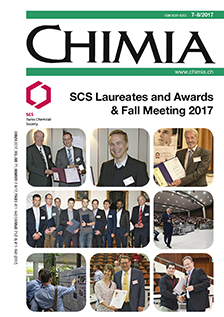Advancing Materials and Methods for Photoelectrochemical Energy Conversion
DOI:
https://doi.org/10.2533/chimia.2017.471Keywords:
Hydrogen, Interface engineering, Nanostructure, Semiconductor, Solar fuelAbstract
Strategies to convert energy from the sun into chemical fuels and feedstocks for a carbon-neutral economy are under rapid development. A photoelectrochemical route uses a direct semiconductor–liquid junction that offers simplicity but places challenging constraints on the materials used. The LIMNO lab has made significant progress in demonstrating new viable classes of materials, defining new methods to control the nanostructure of photoelectrodes to enhance charge extraction, and to engineer the electrode interfaces to reduce losses in photoelectrodes. These techniques contribute to a toolset which will enable inexpensively processed, robust semiconductor materials to obtain high performance solar to fuel conversion. Herein the major advances and achievements of LIMNO toward this goal are highlighted within the context of the current state of the art and the future prospects for the field.Downloads
Published
2017-08-09
Issue
Section
Scientific Articles
License
Copyright (c) 2017 Swiss Chemical Society

This work is licensed under a Creative Commons Attribution-NonCommercial 4.0 International License.
How to Cite
[1]
Chimia 2017, 71, 471, DOI: 10.2533/chimia.2017.471.







